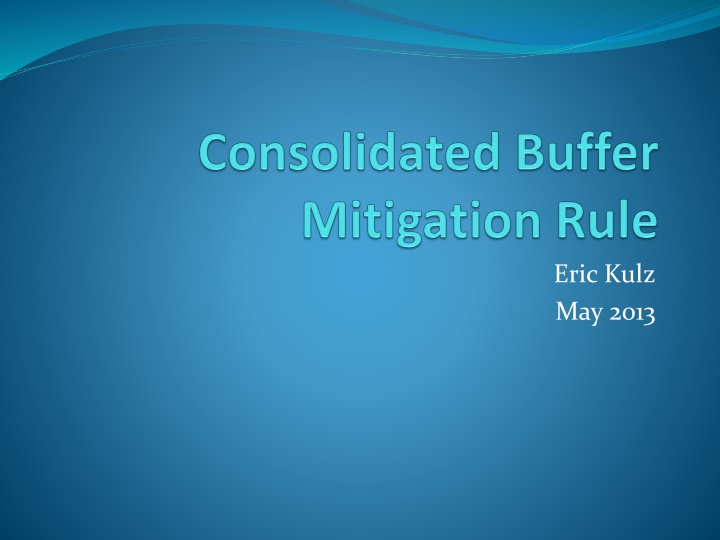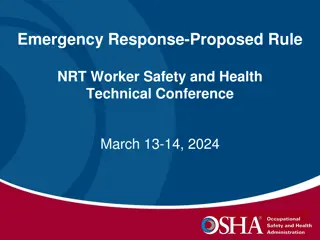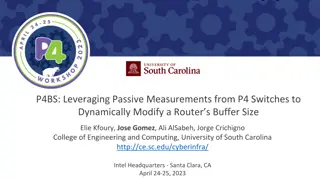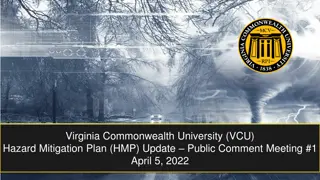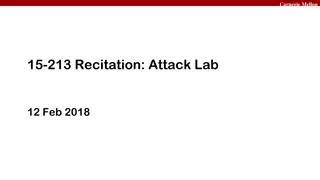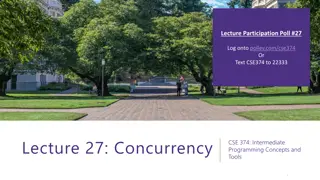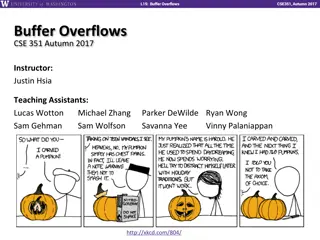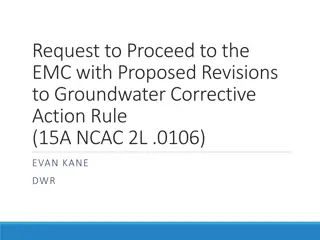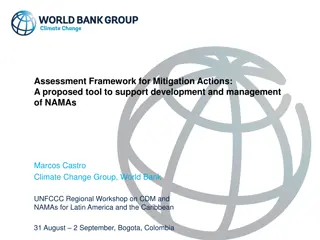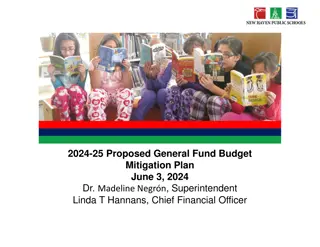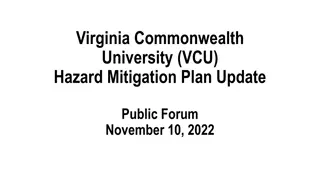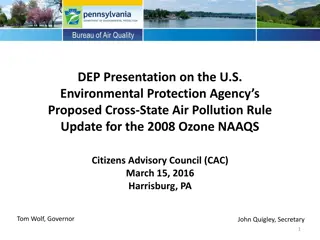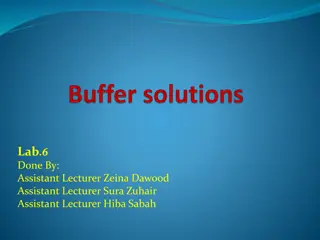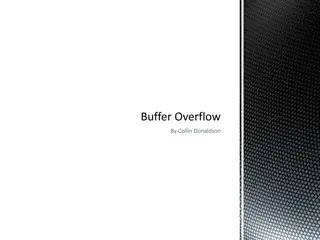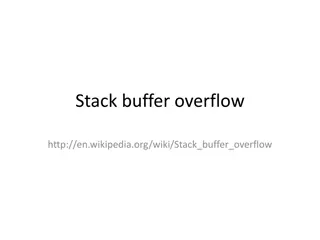Alternative Buffer Mitigation Options for Proposed Rule
Proposed mitigation options that aim to reduce nutrient loading and provide flexibility for compliance with buffer regulations. The document outlines major changes, locational ratios, and proposed amendments to existing rules, with a focus on non-structural and vegetative approaches in stream buffer restoration.
Download Presentation

Please find below an Image/Link to download the presentation.
The content on the website is provided AS IS for your information and personal use only. It may not be sold, licensed, or shared on other websites without obtaining consent from the author.If you encounter any issues during the download, it is possible that the publisher has removed the file from their server.
You are allowed to download the files provided on this website for personal or commercial use, subject to the condition that they are used lawfully. All files are the property of their respective owners.
The content on the website is provided AS IS for your information and personal use only. It may not be sold, licensed, or shared on other websites without obtaining consent from the author.
E N D
Presentation Transcript
Eric Kulz May 2013
Purpose For Proposed Rule Required by state statute G.S. 143-214.20 EMC to adopt rules concerning Construction of an alternative measure (of buffer mitigation) that reduces nutrient loading as well as or better than the riparian buffer that is lost. Easier to understand rule, consistent between various buffered watersheds, greater flexibility for compliance Increases the number of sites and options for buffer mitigation which provides value to communities, homeowners, and land developers Makes existing rules consistent with the principles in Executive Order 70 and SL 2011-398
Public Hearing Process Hearing Officer: Dr. Ernest Larkin Public Notice: Jan. 11, 2013 Mar. 18, 2013 Public Hearings: Feb. 6, 2013 Raleigh Feb. 12, 2013 - Winterville Oral and Written Comments summarized in Hearing Officer s Report
Proposed Rule Major changes/additions between proposed rule and current rules
Proposed Mitigation Locational Ratios 02B .0295 (e) Adjacent 8-digit HUC Within 8-digit HUC Within 12-digit HUC Mitigation Option Option A (current) 1:1 n/a n/a 1) On-site mitigation 2) All other types of mitigation 2:1 1:1 1:1 Option B 0.75:1 n/a n/a 1) On-site mitigation 2) All other types of mitigation 2:1 1.5:1 1:1 Option C 0.75:1 n/a n/a 1) On-site mitigation 2) All other types of mitigation 2:1 1:1 0.75:1
Alternative Buffer Mitigation Options (Non-Structural/Vegetative) 02B .0295 (k)(2) Coastal Headwater Stream Mitigation Sites Non-Subject Stream Buffer Restoration/Enhancement Narrower Buffers on Urban Streams Enhancement of Grazed Forested Riparian Areas Buffer Preservation Preservation of Non-Subject Streams: 5:1 credit ratio (Not Applicable for Randleman) Preservation of Subject Streams: Option 1: 10:1 credit ratio Option 2: 10:1 credit ratio on rural sites, 3:1 on urban sites
Existing Sanitary Sewer Easements in Proposed Buffer Mitigation Sites 02B .0295 (k)(2)(E) Option 1: If sewer easement is present in either Zone 1 or Zone 2, the area within the easement is NOT suitable for mitigation. The site may get credit for narrower buffer if urban site. Option 2: If sewer easement is present, no credit within easement for Zone 1. Credit for Zone 2 portion of easement provided that Zone 1 outside easement is restored, Zone 2 is vegetated, and diffuse flow maintained throughout buffer.
Alternative Buffer Mitigation Options (Structural/BMPs) 02B .0295 (k)(3) 1:1 restoration or 3:1 enhancement required to offset footprint of impact prior to using structural options to satisfy remainder of mitigation requirement BMPs required by other local, state or federal rules/regulations cannot be used for buffer mitigation Retrofit or expansion of existing BMPs allowed if not required by other local, state or federal rules/regulations BMP must provide at least 30% total N and 35% total P removal Must follow DWQ BMP Manual Requires bonding and endowment for long-term monitoring and maintenance
Other Alternative Buffer Mitigation Options 02B .0295 (k)(4) May be considered by DWQ on a case-by-case basis Must meet or exceed nutrient removal functions of riparian buffer impacted Must meet other requirements related to bonding, O&M, and long-term endowment Public notice and comment period DWQ present recommendations to Environmental Management Commission
Retroactive Credit for Alternative Buffer Mitigation Sites 02B .0295 (k)(1)(B) Option 1: Projects that have been constructed and are within required monitoring period as of the effective date of this Rule are eligible for use as Alternative Buffer Mitigation Option 2: Projects that have been constructed and are within required monitoring period are eligible for use as Alternative Buffer Mitigation. Projects that have been completed and released from monitoring requirements on or before the effective date of the Rule are eligible for use as alternative buffer mitigation for a period of ten years from the effective date of the rule
Credit Accounting on Mitigation Sites 02B .0295 (l)(3) Buffer credit on stream mitigation sites Option 1: Allow buffer and stream mitigation with separate accounting on same site (current status) Option 2: Tie stream and buffer credits together; a stream impact with associated buffer impact can be offset by stream and buffer credit from stream site. Additional buffer mitigation need must be acquired elsewhere (or strand stream credit) Option 3: Riparian buffer mitigation credit cannot be generated on stream mitigation sites. If Options 1 or 2: wetlands restored within 50-foot buffer can be used as wetland credit OR buffer credit, NOT both
Proposed Mitigation Locational Ratios 02B .0295 (e) Adjacent 8-digit HUC Within 8-digit HUC Within 12-digit HUC Mitigation Option Option A (current) 1:1 n/a n/a 1) On-site mitigation 2) All other types of mitigation 2:1 1:1 1:1 Option B 0.75:1 n/a n/a 1) On-site mitigation 2) All other types of mitigation 2:1 1.5:1 1:1 Option C 0.75:1 n/a n/a 1) On-site mitigation 2) All other types of mitigation 2:1 1:1 0.75:1
Alternative Buffer Mitigation Options (Preservation) 02B .0295 (k)(2) Preservation of Subject Streams: Option 1: 10:1 credit ratio Option 2: 10:1 credit ratio on rural sites, 3:1 on urban sites
Existing Sanitary Sewer Easements in Proposed Buffer Mitigation Sites 02B .0295 (k)(2)(E) Option 1: If sewer easement is present in either Zone 1 or Zone 2, the area within the easement is NOT suitable for mitigation. The site may get credit for narrower buffer if urban site. Option 2: If sewer easement is present, no credit within easement for Zone 1. Credit for Zone 2 portion of easement provided that Zone 1 outside easement is restored, Zone 2 is vegetated, and diffuse flow maintained throughout buffer.
Retroactive Credit for Alternative Buffer Mitigation Sites 02B .0295 (k)(1)(B) Option 1: Projects that have been constructed and are within required monitoring period as of the effective date of this Rule are eligible for use as Alternative Buffer Mitigation Option 2: Projects that have been constructed and are within required monitoring period are eligible for use as Alternative Buffer Mitigation. Projects that have been completed and released from monitoring requirements on or before the effective date of the Rule are eligible for use as alternative buffer mitigation for a period of ten years from the effective date of the rule
Credit Accounting on Mitigation Sites 02B .0295 (l)(3) Buffer credit on stream mitigation sites Option 1: Allow buffer and stream mitigation with separate accounting on same site (current status) Option 2: Tie stream and buffer credits together; a stream impact with associated buffer impact can be offset by stream and buffer credit from stream site. Additional buffer mitigation need must be acquired elsewhere (or strand stream credit) Option 3: Riparian buffer mitigation credit cannot be generated on stream mitigation sites, with the exception of Coastal Plain Headwater Stream sites.
